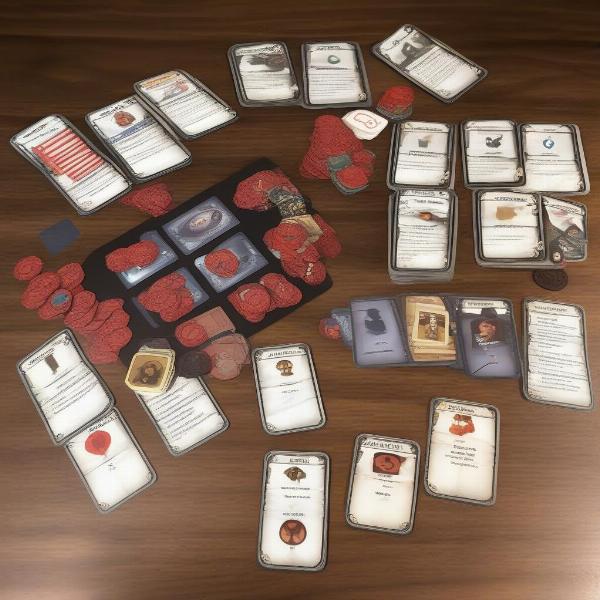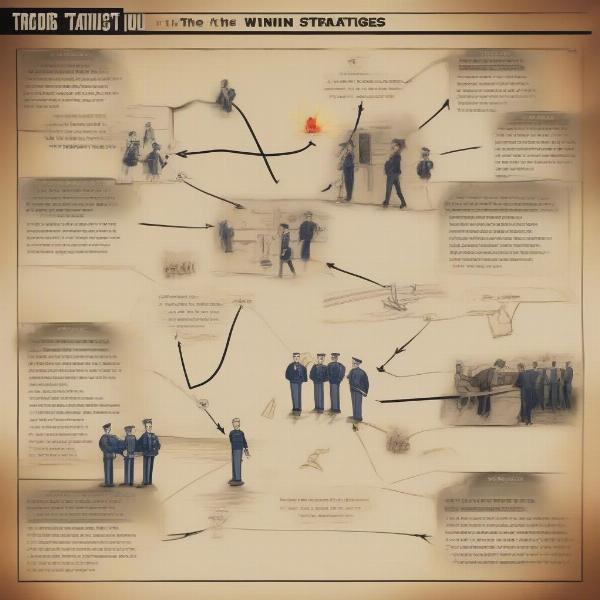Traitors is a social deduction board game where players work together on missions, but some are secretly traitors trying to sabotage them. This guide covers everything you need to know about how to play Traitors, from setup to advanced strategies.
Understanding the Basics of Traitors
Traitors is a game of deception, deduction, and teamwork. Each player receives a secret role: either a loyal crew member working to complete missions or a traitor trying to undermine them. The game progresses through rounds of missions, with players voting on who goes on each mission. Traitors win if they successfully sabotage enough missions, while the crew wins by completing enough missions.
Setting Up the Traitors Board Game
Before you start, familiarize yourself with the game components, including character cards, mission cards, vote tokens, and the traitor track. Shuffle the character cards and deal one face down to each player. This card determines their allegiance. Place the appropriate number of mission cards face down based on the player count. Finally, place the traitor tracker on the starting space.
Gameplay: A Step-by-Step Guide
- Mission Proposal: A designated player proposes a team for the current mission. The number of players required for the mission varies depending on the round and the player count.
- Voting: All players vote on whether to approve the proposed team. A majority vote is required to send the team on the mission. If the vote fails, the proposal passes to the next player.
- Mission Execution: If the vote passes, the chosen players secretly select either a success or fail card. Traitors must choose a fail card on certain missions, while crew members must always choose success.
- Mission Reveal: The mission cards are revealed simultaneously. A single fail card can sabotage the mission, depending on the mission card requirements.
- Advance Traitor Tracker: If the mission fails, advance the traitor tracker.
- Repeat: Continue proposing, voting on, and executing missions until either the crew or the traitors achieve the required number of successes or failures to win.
 Traitors Board Game Setup: Essential Components and Arrangement
Traitors Board Game Setup: Essential Components and Arrangement
Advanced Strategies for Traitors and Crew
Playing Traitors effectively requires more than just understanding the rules. Here are some advanced strategies to consider:
For the Crew:
- Pay attention to voting patterns: Who consistently votes against missions? Who proposes teams that consistently fail? These can be clues to identify potential traitors.
- Communicate effectively: Share your suspicions but be cautious about revealing too much information, as a traitor might be listening.
- Build trust: Early successes can build trust among crew members, making it easier to identify suspicious behavior later on.
For the Traitors:
- Blend in: Vote strategically to avoid suspicion. Don’t always vote against missions, especially early in the game.
- Sow discord: Create doubt and suspicion among crew members by subtly accusing others.
- Sabotage at opportune moments: Don’t fail every mission. Choose your moments strategically to maximize the impact of your sabotage.
 Traitors Gameplay: Players Voting on a Mission Team
Traitors Gameplay: Players Voting on a Mission Team
“In Traitors, the most effective deception is often the simplest. Sometimes, appearing completely innocent is the best way to hide your true intentions.” – Dr. Anya Sharma, Game Designer and Strategist
The Psychology of Deception in Traitors
Traitors is not just about following rules; it’s about reading people. Observing body language, analyzing speech patterns, and paying attention to subtle cues can be crucial for both traitors and crew members. The game creates a dynamic environment where trust and suspicion constantly shift, making it a fascinating study in social dynamics.
Adapting to Different Player Counts
The strategy for Traitors changes depending on the number of players. With fewer players, deception becomes more difficult as everyone’s actions are more closely scrutinized. With more players, there’s more room for hidden agendas and complex strategies.
“The beauty of Traitors lies in its adaptability. The game experience transforms significantly with varying player counts, offering unique challenges and strategic nuances each time.” – Professor David Miller, Social Psychologist
 Traitors Winning Strategies: Tips and Tricks for Traitors and Crew
Traitors Winning Strategies: Tips and Tricks for Traitors and Crew
Conclusion: Mastering the Art of Treachery and Teamwork
Learning how to play Traitors takes practice and a keen understanding of social deduction. Whether you’re a seasoned gamer or new to the world of social deception, Traitors offers a thrilling and engaging experience. So gather your friends, assign roles, and prepare for a game filled with intrigue, suspicion, and unforgettable moments. Are you ready to uncover the traitors among you?
FAQ
- How many players can play Traitors? Traitors can be played with 5-10 players.
- How long does a game of Traitors typically last? A game typically lasts 30-60 minutes.
- What happens if a traitor reveals their role? While not explicitly against the rules, revealing your role removes the element of surprise and can impact the game’s dynamic.
- Can traitors communicate with each other secretly? Traitors can communicate secretly during the mission execution phase, but not during other phases of the game.
- What happens if the traitor tracker reaches the end? The traitors win the game.
- Can the crew win if they complete all missions? Yes, the crew wins if they successfully complete the required number of missions.
- Are there different versions of Traitors? While the core gameplay remains the same, some variations and expansions introduce new roles and mechanics.

